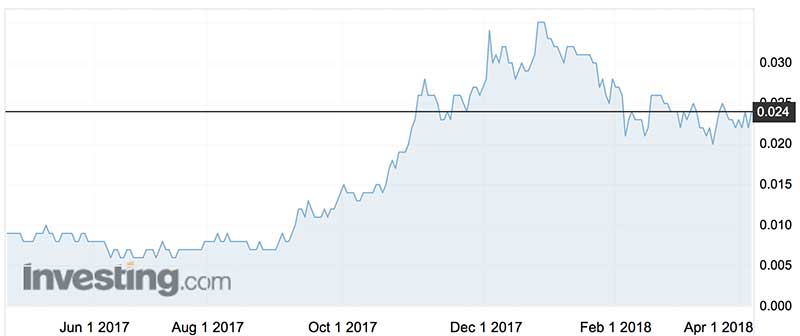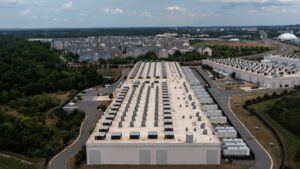After a 20-year wait, Argonaut is about to drill a copper project with big potential

Pic: John W Banagan / Stone via Getty Images
After 20 years of delays, Argonaut hopes in July to show the big-time potential of its South Australian copper prospect, writes Barry FitzGerald in his weekly Garimpeiro column.
Argonaut Resources is one to watch as 2018 unfolds thanks to the stars aligning for the hardy explorer at copper projects in South Australia and Zambia.
The alignment comes as Argonaut (ASX:ARE) secures long-delayed approvals for a major drilling program to test the big-time potential of the Torrens copper prospect in South Australia.
At the same time, the rise and rise of cobalt prices giving the economic potential of the company’s Nyungu copper-cobalt deposit in north-west Zambia a boost.
Argonaut has been itching to confirm the big-time potential of its Torrens prospect with the drill bit for near on 20 years.
The prospect sits beneath the salt-crusted Lake Torrens in a copper region that is already home to BHP’s Olympic Dam copper monster, OZ Minerals’ Prominent Hill mine, and OZ’s $900 million Carrapateena mine development.
But apart from three quick holes in 2007-2008 that confirmed the presence of a similar mineralised system at Torrens, Argonaut’s plans to hit the prospect with a full-blown drilling program were frustrated over the years by native title issues.
Argonaut’s doggedness has paid off, with the last of the approvals and authorisations needed now in the bag, clearing the way for what will be one of the most-watched exploration programs in recent times to kick off in the second half of the year.

Torrens was originally pegged in 1997 by a private company which Argonaut acquired in 2002. It is now a joint venture between Argonaut (30% and operator) and NSW copper producer Aeris Resources (70%).
Argonaut director and CEO Lindsay Owler told Stockhead that the partners would be meeting for three days this week to nut out the drilling program.
“We will be sorting out what is on the critical path for us so that we can get everything moving forward and get the drilling happening as soon as possible.
“We’ve had a beauty parade of contractors through over the last month and we are looking at letting the drilling contract shortly, as well as the helicopter support contract,’’ Owler said.
He said the joint venture was looking at an initial 30-hole program to depths of 1000m plus, starting out with one rig and moving to two rigs once the low-impact credentials of the campaign are confirmed.
Each hole will cost in the order of $450,000-$500,000, pricing a 30-hole campaign at as much as $15m.
It is a big ask for the joint venture.
But the size of the potential price – the multi-target Torrens anomaly has a bigger footprint than Olympic Dam – means funding should not be an issue.
That is particularly so if one of the early holes snags something special. On that score it is worth noting that Prominent Hill was “discovered’’ with its first hole, Carrapateena its second, and Olympic Dam its 16th.
The years of waiting are almost over at Torrens, with Owler saying he hoped the first drill hole could get going in July.
It will be exciting times for Argonaut which last traded at 2.4c for a market cap of $30.6 million.
> Bookmark this link for small cap breaking news
> Discuss small cap news in our Facebook group
> Follow us on Facebook or Twitter
> Subscribe to our daily newsletter
The current price is a big improvement on last year’s lows for the stock.
While the OK for drilling at Torrens is part of the story, the company’s Nyungu copper-cobalt project has also come in to its own thanks to the surge in cobalt prices.
It is part of Argonuat’s Lumwana West project, located 65km south of the border with the Democratic Republic of the Congo — the supplier of more than half of the world’s cobalt needs at a time when demand is booming because of the lithium ion battery revolution.
Zambia presents as a less risky and more ethical supply source for the metal.
Previous drilling at Nyungu has enabled a compliant exploration target of up to 1.1 million tonnes of copper and up to 24,000 tonnes of high-priced cobalt to be released.
But as the previous drilling targeted sulphide copper mineralisation, the plan now is to drill test shallower oxide mineralisation.
Much of the cobalt that comes from the DRC is from oxide deposits.
If similar mineralogy is proved at Nyungu, Argonaut could look a two-stage development scenario in which oxide material is run through a low-cost dense media separation plant to provide cash to help fund a bigger development of the sulphide copper.
UNLOCK INSIGHTS
Discover the untold stories of emerging ASX stocks.
Daily news and expert analysis, it's free to subscribe.
By proceeding, you confirm you understand that we handle personal information in accordance with our Privacy Policy.








